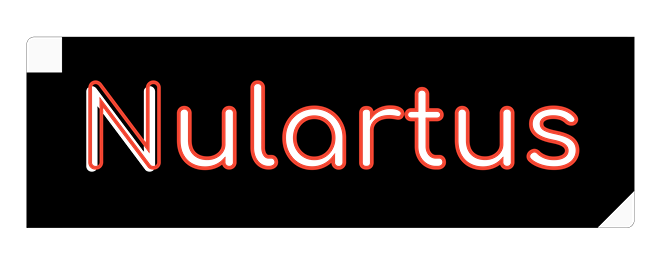A Programmer's Mind to Writing Code That Lasts
Speaking & Writing for Machines and Humans

Ever looked back at code you wrote six months ago and felt a creeping sense of dread? You stare at the screen, trying to decipher the logic, and a single, humbling question echoes in your mind: “What was I thinking?” This experience is a universal rite of passage for every developer. It’s the moment we realize that making a program work is only the first, and arguably the easiest, part of our job.
From our very first "Hello, World!" we are trained to satisfy the computer. We learn its strict rules, its unforgiving syntax, and its literal interpretation of our commands. We learn to appease the compiler, to chase the green checkmark of passing tests, and to celebrate the moment our creation finally executes without crashing. But this relentless focus on the machine obscures a far more important truth: the most critical audience for our code is not the machine at all. It is the unseen audience of human beings who will inherit our work.
Understanding this distinction is the foundation of a mature programming philosophy. It is the key to evolving from someone who simply writes code to someone who builds lasting, valuable, and respectable software.
Speaking to the Machine
Before we can concern ourselves with higher ideals, we must first satisfy our primary gatekeeper: the computer. This is the world of pure mechanics. The machine is a pedantic, literal-minded servant. It does exactly what it is told, for better or for worse. It does not appreciate elegance, it cannot infer intent, and it has no patience for ambiguity. A missing semicolon or a misplaced bracket is not a minor typo; it is a critical failure to communicate.
Mastering this language is the price of entry into our craft. It involves learning the vocabulary and grammar of a chosen programming language, understanding data structures, and grasping the flow of logical execution. The satisfaction that comes from this mastery is real and profound. It is the thrill of bending electricity and silicon to our will, of building something functional out of pure thought. We write the code, the machine executes it, and a result is produced. On the surface, the transaction is complete.
But this is merely the foundation. To stop here is to build a house with a solid foundation but no windows, no doors, and no consideration for the people who will have to live in it. Code that only speaks to the machine is brittle, opaque, and ultimately a liability. It may work today, but it creates a debt of confusion and frustration that someone, someday, will have to pay.
Writing for the Human
This is where the real work begins. Once we have satisfied the machine, we must turn our attention to the unseen audience. Who are they? They are the teammates who will need to extend your feature next quarter. They are the new hires who will read your code to learn the architecture of the system. They are the on-call engineers, woken at 3 a.m., desperately trying to debug a problem in your logic. And, most importantly, they are you, six months or six years from now, returning to this work with only a faint memory of its purpose. This future version of yourself is the most important audience member you will ever have, and they are also the one you are most likely to betray.
Writing for this human audience requires a completely different set of skills, centered on a single virtue: empathy. It requires you to constantly ask, “Will the next person understand this?” This question transforms how you approach every line of code.
Cleverness becomes a liability; clarity becomes the ultimate goal. A "clever" one-liner that uses obscure language features might feel satisfying to write, but it is a puzzle for the next reader. A clear, straightforward block of code that expresses its intent without ambiguity is a gift. It is a signpost, not a maze. This means choosing names for your variables and functions with deliberate care. A variable named data or temp is a missed opportunity for communication. A variable named unprocessedCustomerOrders tells a story. A function named processItems is vague; a function named sendInvoiceToBillingDepartment is explicit and clear.
This philosophy extends to the very structure of your work. A well-organized program is like a well-written book. It is divided into logical chapters (modules or files), with each chapter containing focused paragraphs (functions or classes) that are easy to read and understand on their own. The reader can navigate the codebase with confidence, understanding how the smaller parts contribute to the whole. A poorly organized program, on the other hand, is a tangled mess—a single, sprawling chapter with no paragraphs, forcing the reader to hold the entire system in their head at once, an impossible task.

Finally, we must consider comments. The novice programmer writes comments that explain what the code is doing. This is often redundant, as the code itself should be clear enough to state its own function. The expert programmer writes comments that explain why. These comments are the director's commentary for your code. They reveal the context that the code itself cannot: "We are using this unusual approach because of a specific performance issue in the old library," or "This check may seem redundant, but it protects against a rare edge case discovered during the XYZ incident." These "why" comments are invaluable, providing the historical and business context that turns a confusing piece of logic into a sensible, well-reasoned decision.
In the end, writing for the human audience is an investment. It takes more time and more thoughtful effort up front. But it is an investment that pays for itself a hundred times over in reduced bugs, faster onboarding of new developers, and easier maintenance. It is the difference between creating a disposable tool for a single task and building a lasting piece of a larger, healthier ecosystem. It is how we transform our code from a temporary solution into a permanent asset, ensuring that our work, and our legacy, can be understood, respected, and built upon for years to come.



